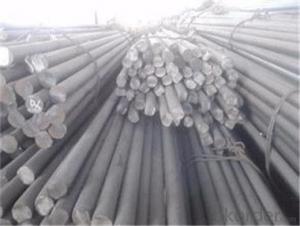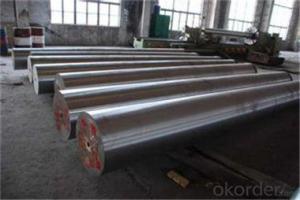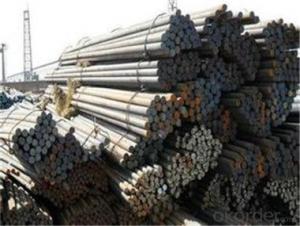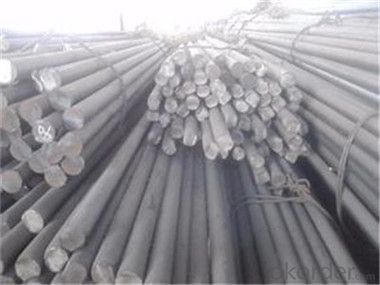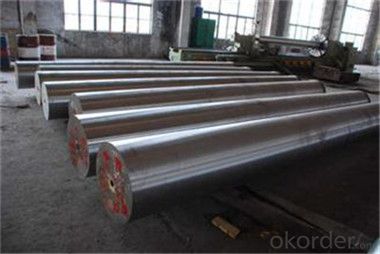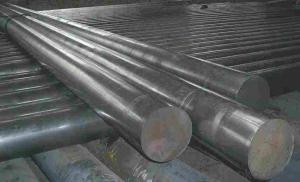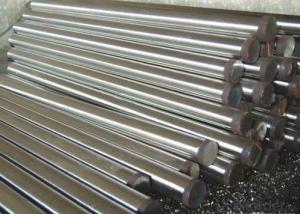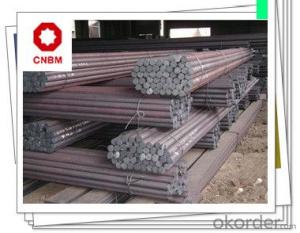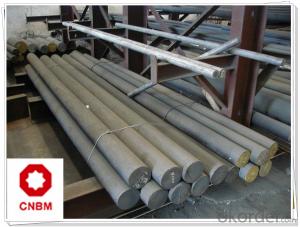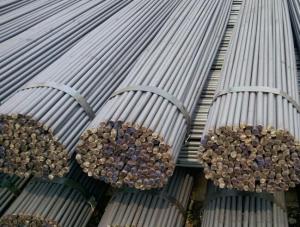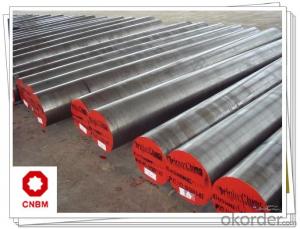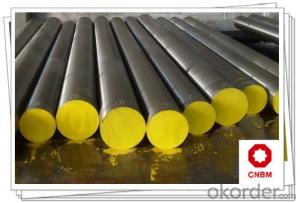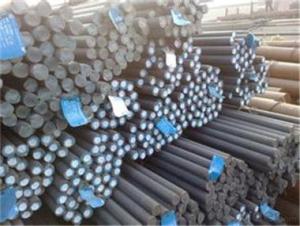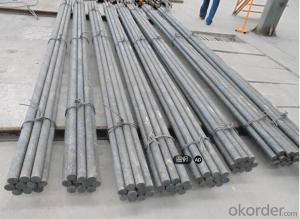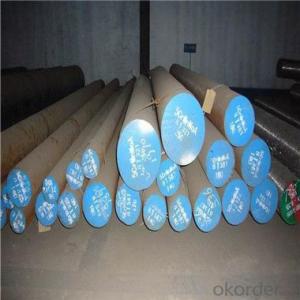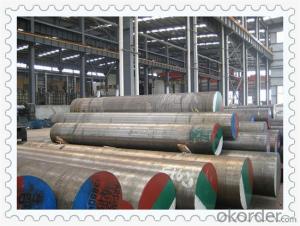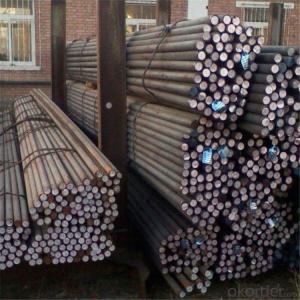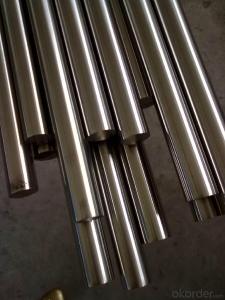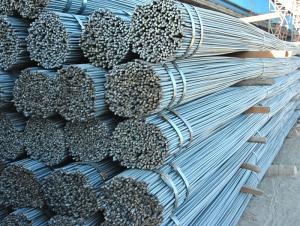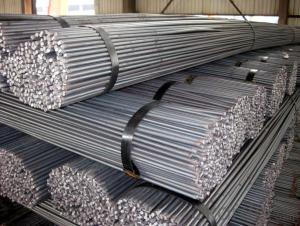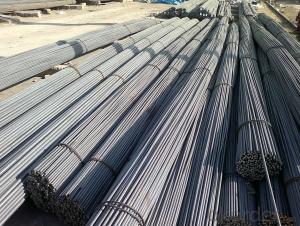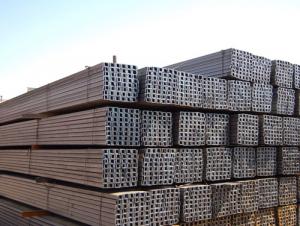C45 / SAE1045 / 45# / En8 Forged Steel Round Bar
- Loading Port:
- Fuzhou
- Payment Terms:
- TT OR LC
- Min Order Qty:
- 445 m.t.
- Supply Capability:
- 200028888 m.t./month
OKorder Service Pledge
OKorder Financial Service
You Might Also Like
Description of steel round bar:
1. Commodity: Round steel bar
3. Technical: Hot rolling
2. Length: Min. 5.8meter, according to requirement.
3. Diameter: 16mm-250mm
5. Packing: In Bundle or according to your requirements.
Festures of steel round bar:
Main products | |
Hot work tool steel | |
DIN | 1.2344,1.2343,1.2365, |
AISI | H13,H11,H10,H21,L6 etc. |
JIS | SKD61,SKD6,SKD5,SKT4 etc. |
Cold work too steel | |
DIN | 1.2601,1.2379,1.2080,1.2363, |
AISI | D2,D3,A2,O2,O1 etc. |
JIS | SKD1,SKD11,STD12 |
Plastic mould steel | |
DIN | 1.2083,1.2311, |
AISI | P20, P20+Ni,P20+S,420 etc. |
JIS | NAK80 |
High speed tool steel | |
DIN | 1.3355,1.3343 |
AISI | T1,M2 |
JIS | SKH2,SKH51 |
Structural alloy steel | |
DIN | 1.7225, |
AISI | 4140 |
JIS | SCM440 |
We also supply customized special steel, contact us for more information ! | |
Specifications of steel round bar:
Providing complete services from manufacturing and marketing to distributing;
Steel exported all over the world;
Images of steel round bar:
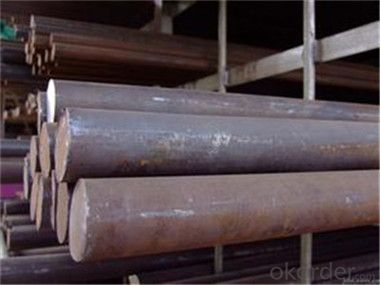
FAQ:
1. What is your package?
Packing situation: standard seaworthy packing or as customer required.
2. What payment term do you accept?
Payment: T/T or L/C at sight.
- Q: Can steel round bars be used in the manufacturing of flanges?
- Certainly, the utilization of steel round bars is feasible for the production of flanges. Flanges are typically employed for the interconnection of pipes, valves, and other equipment in diverse industrial applications. Although flanges can be constructed from various materials like carbon steel, stainless steel, or alloy steel, steel round bars are commonly preferred due to their robustness and longevity. The round bars can be machined or forged into the desired flange configuration and subsequently subjected to further processing to fulfill specific requirements, such as size, thickness, and flange face type. Steel round bars possess exceptional mechanical properties and can withstand substantial pressures, rendering them suitable for application in flange manufacturing.
- Q: Are steel round bars suitable for aerospace applications?
- Yes, steel round bars are suitable for aerospace applications as they offer high strength, durability, and excellent resistance to corrosion, making them ideal for various aerospace components such as landing gear, engine parts, and structural elements.
- Q: Can steel round bars be used in manufacturing equipment?
- Yes, steel round bars can be used in manufacturing equipment. Steel round bars are commonly used in the manufacturing industry due to their various advantageous properties. They are known for their high strength, durability, and resistance to wear and tear. These properties make steel round bars ideal for use in heavy-duty machinery and equipment. They can be used to manufacture components such as shafts, axles, pins, and gears, which are crucial for the proper functioning of machinery. Additionally, steel round bars can be easily machined, welded, and formed into various shapes, making them versatile for use in different manufacturing applications. Overall, steel round bars are a reliable and widely used material in the manufacturing industry for the construction of equipment.
- Q: How do you calculate the weight of a steel round bar based on its length and volume?
- To calculate the weight of a steel round bar based on its length and volume, you need to know the density of the steel. The density represents the amount of mass per unit volume of the material. The formula to calculate the weight is: Weight = Volume × Density First, you need to calculate the volume of the steel round bar. The volume of a cylinder (which is the shape of a round bar) is given by the formula: Volume = π × (Radius)^2 × Length Where π is a mathematical constant approximately equal to 3.14, and Radius is the radius of the round bar. Once you have the volume, you can multiply it by the density of the steel to find the weight. The density of steel can vary depending on the specific type of steel being used. For example, the density of mild steel is around 7850 kg/m³. Therefore, the weight of the steel round bar is calculated as: Weight = Volume × Density For example, let's say we have a steel round bar with a length of 1 meter and a radius of 0.5 meters. To calculate the weight, we need to find the volume first: Volume = π × (0.5)^2 × 1 Volume = 0.7854 m³ Next, we multiply the volume by the density of steel: Weight = 0.7854 m³ × 7850 kg/m³ Weight = 6171.79 kg So, the weight of the steel round bar would be approximately 6171.79 kg.
- Q: Are steel round bars suitable for structural applications?
- Indeed, steel round bars are well-suited for structural applications. Renowned for their robustness and resilience, steel round bars prove to be excellent for diverse structural purposes. They exhibit exceptional load-bearing capabilities, thus frequently employed in construction undertakings like bridges, buildings, and infrastructure projects. Moreover, steel round bars possess commendable resistance against corrosion, fire, and severe weather conditions, thereby ensuring the longevity and structural integrity of the application. Their adaptability allows for effortless shaping, welding, and customization to satisfy the project's specific requisites. All in all, steel round bars present themselves as a dependable and cost-efficient option for structural applications.
- Q: Can steel round bars be coated for improved aesthetics?
- Yes, steel round bars can be coated for improved aesthetics. Coating steel round bars can enhance their appearance by providing a more polished and visually appealing surface. There are various coating options available, such as powder coating, electroplating, or painting, which can be applied to steel round bars to achieve different aesthetic effects. These coatings not only enhance the appearance of the bars but also provide additional benefits such as corrosion resistance and durability. Therefore, coating steel round bars is a common practice to improve their aesthetics in various applications including architectural, decorative, and industrial purposes.
- Q: How can steel round bars be protected from corrosion?
- There are various methods available for protecting steel round bars from corrosion. One common approach involves the application of a protective coating, such as paint or enamel. This coating acts as a barrier between the steel and the corrosive elements present in the environment, thereby minimizing the risk of corrosion. Another effective technique is the use of galvanization, which entails coating the steel round bars with a layer of zinc. Zinc, being a sacrificial metal, tends to corrode more readily than steel. Consequently, when the round bars come into contact with moisture or other corrosive substances, the zinc coating corrodes instead of the steel, providing an extra layer of protection. The utilization of stainless steel round bars is also highly effective in preventing corrosion. Stainless steel contains a significant amount of chromium, which forms a passive layer on the steel's surface. This passive layer acts as a shield, safeguarding the steel against corrosion caused by moisture or other corrosive agents. Regular maintenance and cleaning of the steel round bars are essential for preventing corrosion. Removing dirt, dust, and other contaminants from the surface helps to preserve the protective coating or passive layer if it exists. Additionally, keeping the round bars dry and storing them in a well-ventilated area can also aid in corrosion prevention. Proper handling and storage of steel round bars are equally important. Storing them in a dry and covered location prevents exposure to moisture and corrosive elements. It is also crucial to avoid contact with other metals or materials that can induce galvanic corrosion. By implementing these protective measures, steel round bars can be effectively shielded from corrosion, ensuring their longevity and structural integrity.
- Q: Can steel round bars be used for making interior components?
- Yes, steel round bars can be used for making interior components. They are often used in various applications such as handrails, furniture, fixtures, and decorative elements due to their strength, durability, and versatility.
- Q: What is the maximum temperature a steel round bar can withstand?
- The maximum temperature a steel round bar can withstand depends on several factors such as the specific type of steel, its composition, and the intended application. Generally, most common grades of steel have a maximum temperature limit of around 1,200 to 1,400 degrees Fahrenheit (650 to 760 degrees Celsius). However, some stainless steels can withstand higher temperatures, reaching up to 2,200 degrees Fahrenheit (1,200 degrees Celsius). Additionally, specialized heat-resistant alloys such as Inconel or Hastelloy can withstand even higher temperatures, up to 2,500 degrees Fahrenheit (1,370 degrees Celsius) or more. It is crucial to consult the manufacturer's specifications or conduct thorough research to determine the precise maximum temperature limit for a specific steel round bar in order to ensure its safe and efficient use.
- Q: 1, three, two, steel, wire rod, round steel what is the difference?
- Wire is a wire, usually refers to the use of "high speed non-twist wire rod rolling mill, ordinary common low carbon steel, hot-rolled wire torsion free cooling (ZBH4403-88) and the high quality carbon steel, hot-rolled wire rod without torsion cold control (ZBH44002-88).
Send your message to us
C45 / SAE1045 / 45# / En8 Forged Steel Round Bar
- Loading Port:
- Fuzhou
- Payment Terms:
- TT OR LC
- Min Order Qty:
- 445 m.t.
- Supply Capability:
- 200028888 m.t./month
OKorder Service Pledge
OKorder Financial Service
Similar products
Hot products
Hot Searches
Related keywords
